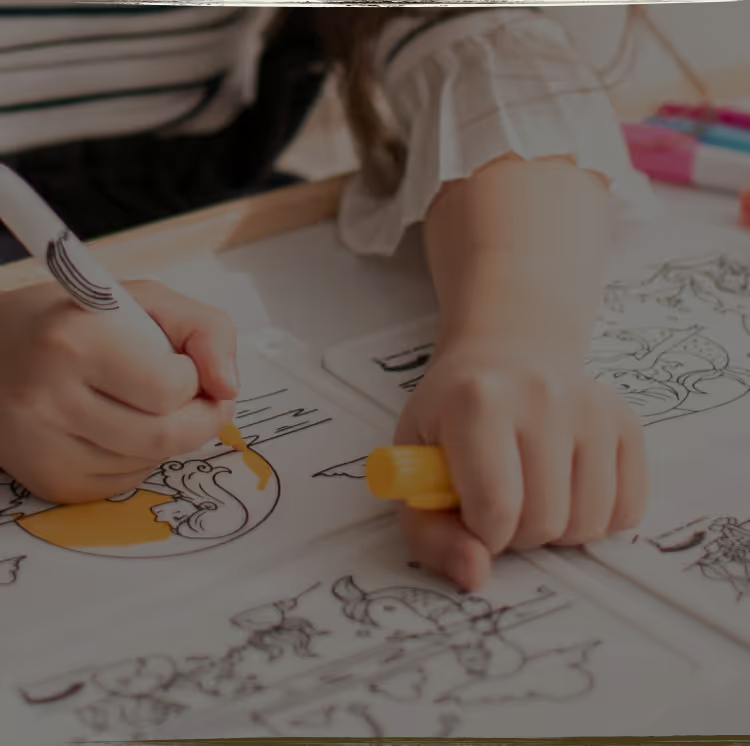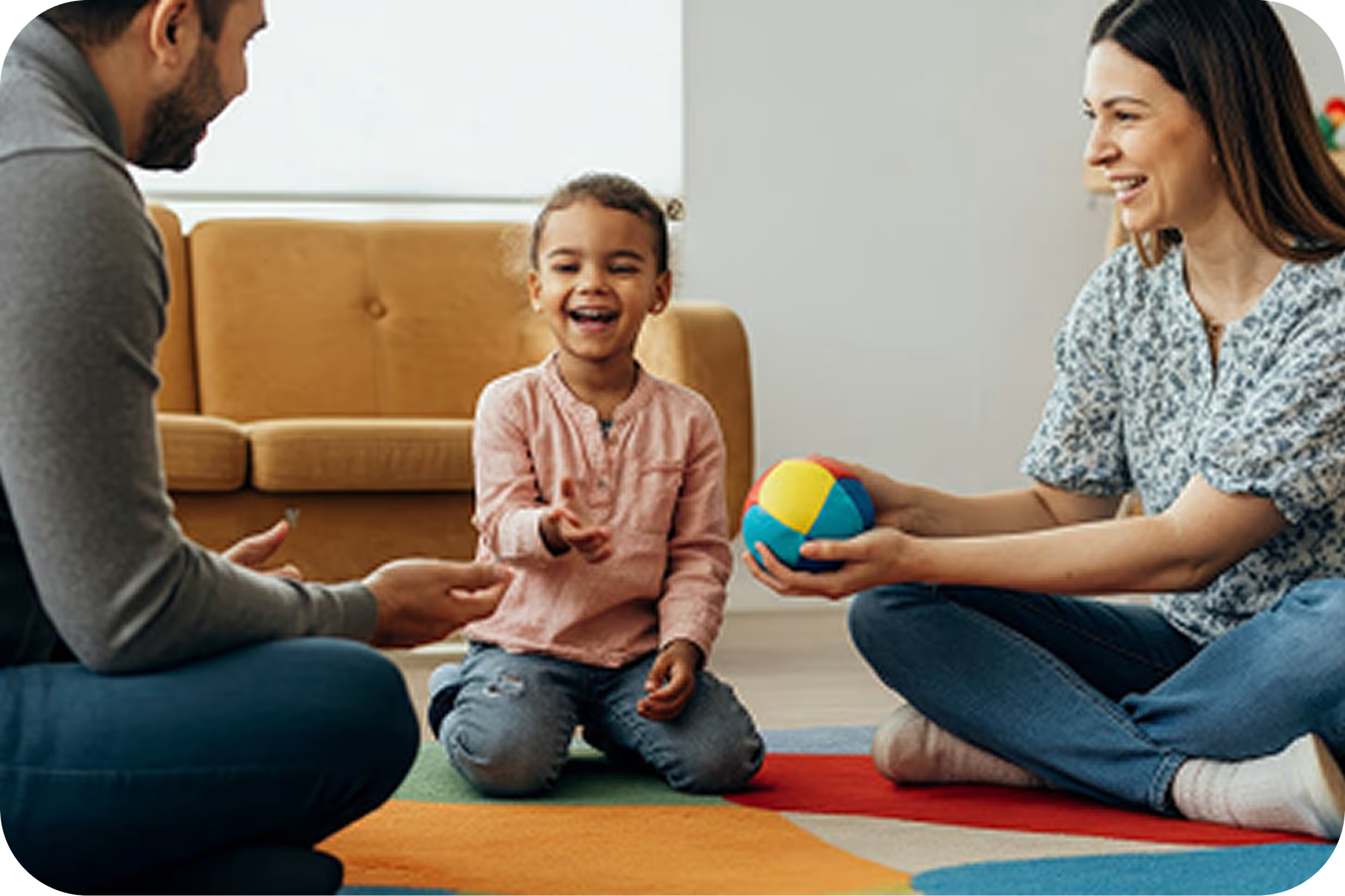Introduction
Your child knows exactly what they want to tell you, but the words won't come. The pointing, sounds, and frustration that follow are heartbreaking for any parent. If this sounds familiar, you're not alone—and you're not without solutions.
Augmentative and Alternative Communication (AAC) offers a powerful bridge that connects you to your child's inner world while building their confidence and independence. This guide explores evidence-based AAC strategies and practical ways to empower your child's voice.
Key takeaways
What parents need to know:
- AAC is completely customizable to your child's unique strengths and communication style.
- Research proves AAC supports speech development—it doesn't replace talking, it enhances it.
- Early intervention with professional guidance creates the foundation for communication success.
What is Augmentative and Alternative Communication (AAC)?
AAC is your child's personal communication toolkit—methods, tools, and systems that help children with limited or no verbal speech communicate effectively. For autistic children, this toolkit includes:
- Picture Exchange Communication System (PECS): Children use pictures to communicate needs. It's portable, affordable, and easy for everyone to learn.
- Communication boards: Visual displays of symbols, letters, or words that children point to.
- Speech-generating devices (SGDs): High-tech tools that turn selections into spoken words.
- Tablet-based AAC apps: Digital solutions like Proloquo2Go or TouchChat that transform tablets into communication devices.
- Manual signing/gestures: Often combined with other AAC tools.
Research shows that between 25–30% of autistic individuals are minimally verbal or non-speaking, making AAC a vital pathway for social connection and self-expression. However, AAC is not a "last resort"—it can benefit children across the communication spectrum.
Why AAC changes everything for autistic children
Communication is more than speech—it's about participation in daily life. Studies published in the Journal of Autism and Developmental Disorders confirm that AAC:
- Reduces behavioral frustration by providing an outlet for expression.
- Improves social interaction with peers, siblings, and teachers.
- Enhances learning outcomes by letting children demonstrate knowledge.
- Strengthens emotional well-being by reducing isolation.
As AAC researcher Dr. Stephen Calculator explains: "When a child gains access to communication, they gain access to the world."
Finding your child's perfect AAC strategy
Every autistic child brings unique strengths and challenges. Success depends on matching AAC to your child's specific case:
- Learning style: Visual, hands-on, or auditory preferences guide system choice.
- Physical abilities: Fine motor skills affect whether children can manipulate pictures, tap screens, or form signs.
- Cognitive strengths: Some excel with concrete pictures, others handle abstract symbols or text.
- Long-term communication goals: Social inclusion, independent living skills, or academic participation.
In practice
A speech-language pathologist (SLP) with AAC expertise can conduct an evaluation, trial multiple systems, and create a customized plan. Many schools and early intervention programs also provide AAC assessments, ensuring consistency across home and classroom settings.
AAC success in ABA therapy
Applied Behavior Analysis (ABA) therapy provides structured AAC teaching through:
- Step-by-step skill building that breaks communication into manageable parts.
- Positive reinforcement that celebrates every attempt.
- Consistent modeling by therapists and caregivers.
- Data tracking that guides strategy refinements.
The Centers for Disease Control and Prevention (CDC) recommends a multidisciplinary approach, combining AAC with behavioral therapy, occupational therapy, and family training to maximize outcomes.
Pro insight: Start with your child's favorite activities or most motivating needs, such as asking for a favorite toy or snack. When AAC helps them access what they love, they'll see its value. Celebrate every attempt—small successes build confidence for complex communication.
Breaking through common myths about AAC
Despite strong evidence, misconceptions about AAC still persist:
"AAC will stop my child from speaking."
Research proves the opposite—AAC often enhances speech by reducing pressure and frustration.
"AAC is only for non-speaking children."
Children with limited or inconsistent speech also benefit from AAC support.
"It's too early to introduce AAC."
Experts recommend considering AAC as early as 12–18 months for communication delays, depending on developmental readiness.
Moving forward
Augmentative and Alternative Communication is more than technology—it's a pathway to connection and opportunity. With the right tools, early intervention, and a team approach, families can help autistic children move from communication barriers to confident self-expression.
Ready to explore AAC for your child?
Contact our AAC specialists for a personalized consultation and discover how communication tools can transform your family's journey.
Frequently Asked Questions
AAC can be introduced as early as toddlerhood. Early use supports language growth and prevents long-term communication delays.
Costs vary widely. Free apps and homemade boards provide starting points, while advanced devices cost thousands. Insurance, Medicaid, and schools often help cover expenses.
Yes. AAC gives children tools to participate in conversations, share interests, and play collaboratively with peers.
Start with highly motivating activities, keep sessions positive, and work with professionals to find the right approach for your child.
Sources
Sources
- Centers for Disease Control and Prevention (CDC): Treatment and Interventions for Autism Spectrum Disorder
- Autism Speaks: AAC and Communication Strategies
- National Institute of Mental Health (NIMH): Communication in Autism
- American Speech-Language-Hearing Association: AAC Resources
- Journal of Autism and Developmental Disorders: AAC Effectiveness Studies
- Autism Spectrum News: Breaking the Silence – A Parent's Guide to Understanding AAC
Latest insights
Discover valuable resources for your ABA therapy journey.
Join our community
Follow our blog for the latest insights and tips on ABA therapy, autism, and parenting.





